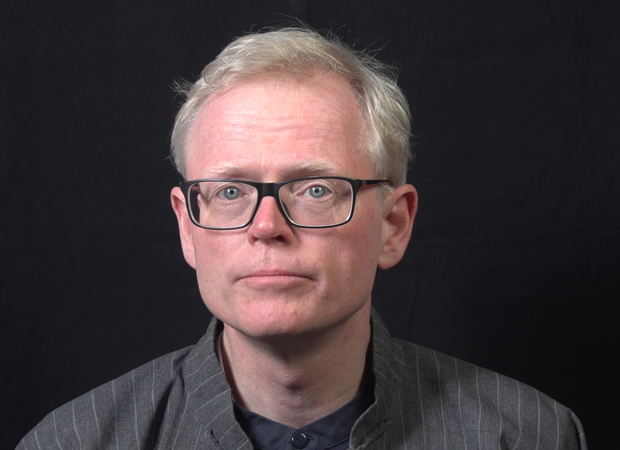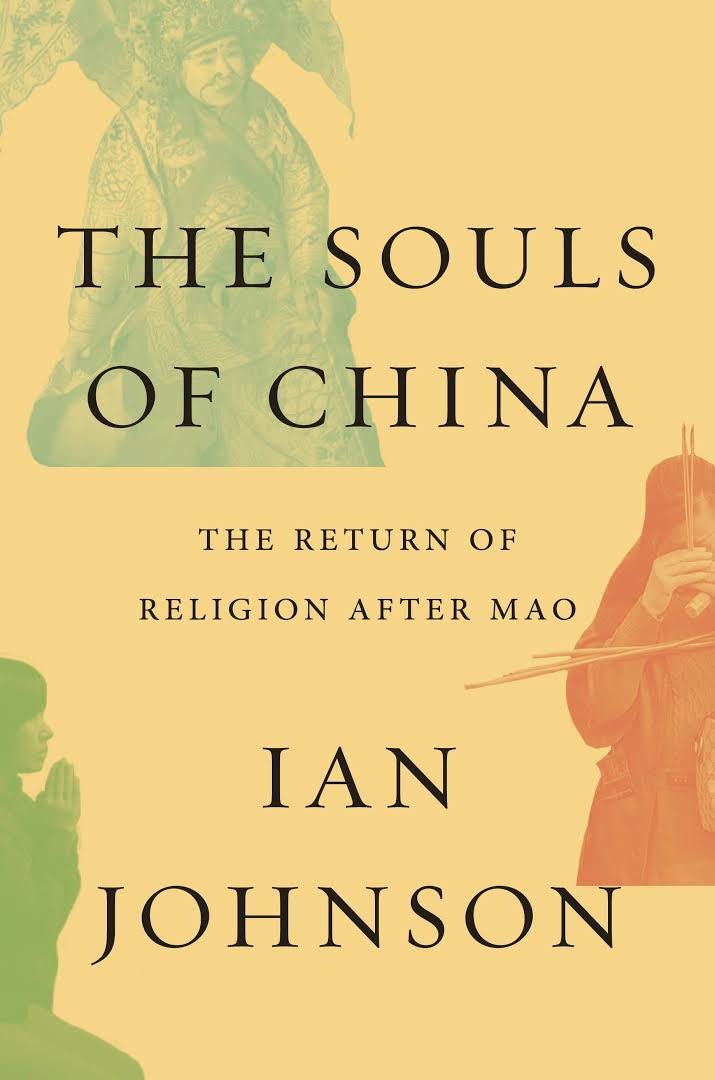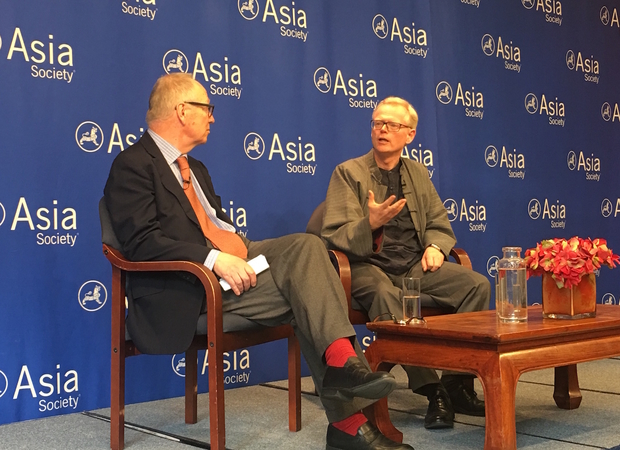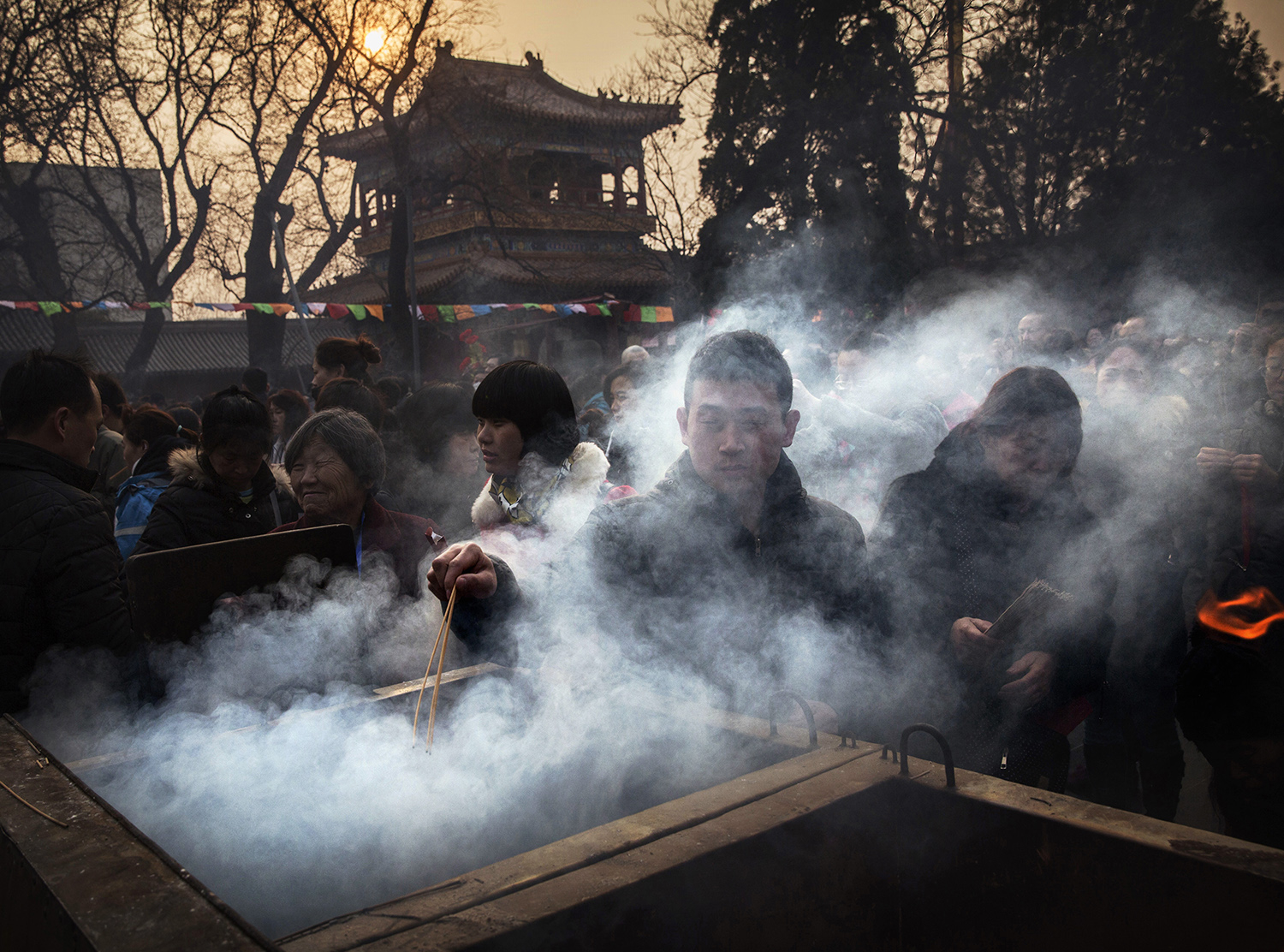If there were just one Chinese in the world, he could be the lonely sage contemplating life and nature whom we come across on the misty mountains of Chinese scrolls. If there were two Chinese in the world, a man and a woman, lo, the family system is born. And if there were three Chinese, they would form a tight-knit, hierarchically organized bureaucracy.
But how many Chinese would there have to be to generate a religion? It could be just one—that Daoist sage in the mountains—but in reality it takes a village, according to Ian Johnson in his wonderful new book, The Souls of China. Chinese religion, Johnson writes, had little to do with adherence to a particular faith. Instead, it was primarily “part of belonging to your community. A village had its temples, its gods, and they were honored on certain holy days.” Or, traditionally, it could also take a workplace: “Almost every profession venerated a god…. The list is inexhaustible….” Chinese religion “was spread over every aspect of life like a fine membrane that held society together.”
At the outset of this account of China’s astounding religious revival since the end of the Mao era in the 1970s, Johnson explains the differences between Chinese religious traditions—Confucianism, Daoism, and Buddhism—and the “Abrahamic” faiths, Judaism, Christianity, and Islam: “Chinese religion had little theology, almost no clergy, and few fixed places of worship.” Confucianism was largely a moral code of what the upright person should aim to achieve by self-cultivation. In the Analects, Confucius famously advised: “Respect ghosts and spirits, but keep them at a distance.” For the Master, it was enough if he or one of his disciples could gain the ear of a Chinese ruler and sort out the problems of the visible world.
Daoists were freer spirits who refused to be bound by Confucian rules of propriety, and they had their own religious rituals. Only Buddhists used their faith, imported from India around the first century AD under the Han dynasty (206 BC–220 AD), to build up a sizable monastic establishment with considerable political power, but it was reduced in size and influence in the later Tang (618–907). By then Buddhism had long been accepted as a Chinese religion.
Thereafter, for Chinese it was not really a matter of choosing: the three traditional “teachings” were a smorgasbord on offer to all and sundry in the community, and representatives of each would perform on demand, and for a price, their particular rituals on appropriate occasions such as funerals. According to Johnson, “for most of Chinese history, people believed in an amalgam of these faiths that is best described as ‘Chinese Religion.’”
Over the centuries, the Abrahamic faiths began to spread into China. Nestorian Christians arrived from Asia Minor in 635 after disputes over doctrine with both the Catholic and the Eastern Orthodox churches. They flourished under the cosmopolitan Tang dynasty and again under Mongol rule but then effectively disappeared. Muslim traders also arrived under the Tang, but in far larger numbers under the Mongol Yuan dynasty (1271–1368) when Islam was spreading throughout Central Asia. Jews settled in Kaifeng when it was the capital of the Northern Song dynasty (960–1127), and flourished for a while, but gradually the community seems to have faded. Under the Ming (1368–1644), considerable pressure was put on the adherents of non-Chinese religions to assimilate.
Of all those professing foreign faiths, it was the Jesuits who had the greatest impact in premodern China. Arriving in the late 16th century, Matteo Ricci emerged as their most prominent leader. He and his colleagues impressed the Confucian elite with their knowledge of science in general and astronomy in particular, for the emperor had to demonstrate to his people a satisfactory relationship with heaven.
The Jesuits flourished particularly after the Qing dynasty (1644–1912) supplanted the Ming. The emperor Kang Xi (r. 1661–1722) put the Jesuits in charge of the royal observatory, and even more significantly issued an edict permitting the practice of Christianity throughout the empire:
The Europeans are very quiet; they do not excite any disturbances in the provinces, they do no harm to anyone, they commit no crimes, and their doctrine has nothing in common with that of the false sects in the empire, nor has it any tendency to excite sedition…. We decide therefore that all temples dedicated to the Lord of heaven, in whatever place they may be found, ought to be preserved, and that it may be permitted to all who wish to worship this God to enter these temples, offer him incense, and perform the ceremonies practised according to ancient custom by the Christians. Therefore let no one henceforth offer them any opposition.
Unfortunately for the Jesuits they became embroiled in a decades-long dispute with the Dominican and Franciscan orders, which accused them of doctrinal sins for their permissiveness about Confucianism. Despite Kang Xi’s support, the pope backed the Jesuits’ critics in what became known as the “Rites controversy,” and in 1742, the church definitively declared Chinese rites incompatible with Christianity. In 1724, Kang Xi’s successor proscribed Christianity as heterodoxy: Christianity thereby lost its best chance of emulating Buddhism and becoming accepted as a Chinese religion.
Christian missionaries returned, however, if not under auspicious circumstances. John Fairbank, the great expert on 19th-century Western trade along the China coast, used to regale his Harvard students with tales of merchants selling opium from one side of their boat while missionaries were handing out Bibles on the other side. Missionaries were not welcomed at court any longer; their most prominent 19th-century “convert” was Hong Xiuquan, who proclaimed himself the younger brother of Jesus and led the midcentury Taiping rebellion, which lasted 14 years, cost an estimated 20 million lives, and almost brought down the Qing empire.
Books
05.08.17

The Souls of China
Missionaries persisted, and though the rate of conversion was disappointing, their influence grew through the establishment of schools, colleges, and hospitals. Sun Yat-sen, the revolutionary who led the struggle that brought down the Qing dynasty in 1912, was converted, as was his successor Chiang Kai-shek. But they were infused with a modernizing zeal that held that traditional Chinese faiths, particularly folk religions, were superstitions and had to be suppressed; hundreds of thousands of folk temples were destroyed. Only the most important Buddhist and Daoist temples survived.
When the Communists took over China in 1949, they organized the five religions they acknowledged—Buddhism, Daoism, Islam, Catholicism, and Protestantism—into associations, part of their United Front with non-Communists. Temples and churches remained open. But foreigners could not be members of the United Front, and Christianity suffered what the writer David Aikman has called its “third vanishing.” Around ten thousand Protestant and Catholic missionaries were thrown out of China, some after being brainwashed. They left behind an estimated three million Catholics and one million Protestants, to be strictly guided by the Party.
Even this relatively mild dispensation did not last as Mao embraced ever more radical policies, culminating in the Cultural Revolution, during which virtually every place of worship, traditional and foreign, was shuttered and its priests humiliated and driven out. It is against this background of many decades of hostility and persecution by modernizers and Communists that Ian Johnson recounts the amazing revival that has taken place over the past 40 years among all faiths in China.
Opinion surveys are notoriously unreliable, but when the question concerns ties to a religious faith in a country ruled by an atheistic Communist Party, then extreme caution and perhaps prevarication on the part of those interviewed would be understandable. In view of this the numbers emerging from successive surveys are remarkable: some 200 million Buddhists and Daoists, 50–60 million Protestants, 10 million Catholics, and 20–25 million Muslims. In addition, there may be 175 million who practice some form of folk religion or belong to small sects. Official surveys have revealed that there are half a million Buddhist monks and nuns in 33,000 temples, and 48,000 Daoist priests and nuns affiliated with 9,000 Daoist temples. The great majority of Protestants are members of underground or “house churches.” Assuming these are at least approximately accurate figures, around a third of the country’s 1.3 billion people admit to a need for a faith to sustain them.
Of course, all religious organizations operate under the watchful eyes of local police, and not all adherents are treated with benign neglect. Tibetan Buddhists are tightly controlled, because most are still loyal to the exiled Dalai Lama, and some have committed suicide. In Xinjiang, there is regular unrest partly because Muslim Uighurs have had restrictions placed upon the practice of their faith. Both Tibetans and Uighurs are suspected to be national “splittists” by the Han Chinese authorities in Beijing.
The faith that has been the most brutally treated is Falun Gong, a sect that started as part of the popular revival in the 1980s of traditional qigong practices involving exercises and meditation. At one point, it was said to have had 100 million followers. But in April 1999, some ten thousand petitioners turned up unannounced outside the Zhongnanhai leadership complex in Beijing to ask the central government to halt a newspaper campaign against Falun Gong. The degree to which the sect was secretly organized was clearly alarming to the authorities, and General Secretary Jiang Zemin ordered a full-scale crackdown, which resulted in the deaths of many adherents, often from abuse in custody. In this case, it was the deep roots of Falun Gong in traditional Chinese practices and its widespread following, including within the Party, rather than any foreign connections that frightened the Communist leaders.
Johnson takes us through the Chinese lunar year, which is associated with many traditional religious and community activities, as the backdrop to telling us of contemporary faith as practiced mainly by three groups of people: a family that makes an annual pilgrimage to a particular temple in Beijing; a Daoist family in Shanxi; and a group of Protestant Christians in Chengdu.
On the first day of the lunar year, you stay at home with your family. On the second day, you pay visits. In Beijing Johnson paid his respects to the “elders and betters” of the Ni family, the 81-year-old patriarch, Ni Zhenshan, and his 56-year-old son, Ni Jincheng. “Betters” because “they understood infinitely more”:
They knew all the holidays on the traditional calendar, the right way to kowtow before a statue, how to recite sutras, which cigarettes to smoke and which grain alcohol to drink. They knew which fruits to eat in April and why you never make a gift of a knife or a plum.
In the 1990s, after old Mr. Ni had recovered from kidney cancer, he fulfilled a vow to make a pilgrimage to the temple of Our Lady of the Azure Clouds, one of the most popular goddesses in northern China, on a mountain 40 miles from the center of Beijing. On the way back he told his son he would like to set up his own pilgrimage association. Such organizations involve much hard work, expense, and time. Mr. Ni wanted his to serve pilgrims free tea and steamed buns, and thus the Whole Heart Philanthropic Salvation Tea Association was established. It required a shrine and an altar, expensive crockery, and a lot of green tea. The family stele by the temple would ensure that the memory of the Nis’ charity would live on.
Johnson becomes so entwined with the Ni family that, three months later, on the 30th day of the third lunar month, the eve of the annual pilgrimage to the temple of Our Lady of the Azure Clouds, he drives supplies up the mountain for the Ni’s Tea Association. During the festival, Wang Defeng, the Communist official who oversaw the rebuilding of the temple in the 1980s and now runs the festival, explains to Johnson that, though a materialist himself, he does his job “for Our Lady. That’s my service, to make sure she is respected properly.” He was not a believer, but like Confucians down the ages, his duty was his faith. Johnson’s account of the festival and his encounters there is a masterpiece of observation and empathy; he seems to disarm most Chinese he meets into thinking he is one of them (though there are hints that some of them might not be averse to publicity).
After two weeks, the Chinese New Year festivities end with a “Lantern Festival.” Johnson spends it with another clan, the Li family, who have been yinyang men—providers of religious services—for nine generations. Johnson describes yinyang men as “a cross between a geomancer, a fortune-teller, and a funeral director.” They carry out “a form of family-based Daoism that was how the religion was originally practiced…yinyang priests are masters of the yin world—the dark world of death—but also the yang world of brightness and life.” He describes in detail one of their funeral services, run by a father and son. But the son, Li Bin, is more than just a funeral director. Johnson had first met him at Carnegie Hall, where he was a member of a group performing traditional music.
Media
04.19.17
ChinaFile Presents: Ian Johnson on ‘The Souls of China’
Johnson had been inclined to dismiss the whole enterprise as chinoiserie, but back in China found out that, through a set of chance encounters, the Li family had become one of 1,200 groups assigned the task of preserving China’s “intangible cultural heritage” (a UNESCO term) by passing on their musical knowledge and skills to future generations. In that capacity, they had traveled to Holland and Italy as well as New York. But the Li family were really Daoist priests and they earned their living by performing their priestly functions with the precision of nine generations resting on their shoulders.
Why does China’s current leader, Party General Secretary Xi Jinping, tolerate worshipers of Our Lady of the Azure Clouds, Daoist yinyang men, and folk religion generally? This is the kind of “superstition” that Mao and his colleagues attempted to stamp out in the early post-revolution years. In many of his actions and pronouncements, Xi seems to want to return to the 1950s, which many of Mao’s colleagues who survived the Cultural Revolution regarded as a golden age: the Party’s morale was high, its purposes clear, and corruption had not eaten into its soul. Johnson writes:
Old Mr. Ni made a point of telling me that the great pilgrimage associations are independent of the government. This is true, as are the spiritual lives of most of the people we followed over the past year. And yet the state played an overwhelming role in their lives seeking to contain and co-opt them.
Xi’s concept of making China great again provides space for traditional religions because historically they were deeply woven into popular culture. Early in his political career, Xi served as Party secretary in Zhengding in Hebei province, a place described in official reports as “chaotic, dirty, and backward.” There he had presided over the reconstruction of a famous Zen Buddhist temple and installed as abbot a famous monk, Shi Youming, who had just spent 30 years as a farm laborer, courtesy of the state. Xi ensured that the temple was recognized as a legal place of worship. Other temples there were also rebuilt. According to Shi’s successor as abbot:
Xi did a great service for Buddhism…. Even when he was working in the south, when he went to Beijing, he would stop by and visit…. He showed respect. I’m not sure he was a believer, but he respected it. He knew more about it than most people.
Johnson met an old woman, one of Shi’s earliest disciples, who insisted that Xi believed in Buddhism. When reminded that he was a Communist leader, she responded:
Well, of course he would not have lit incense…. But when you look at what happened during his term, how this temple was rebuilt and how he kept coming back to see the old master, how else can I express it? Actions speak louder than words.
Whatever his knowledge and commitment, Xi would probably agree with Johnson’s contention that the government can control such religious centers, for they have no foreign ties, and that it will encourage “acceptable forms of faith as a way to strengthen its position as the arbiter of the nation’s moral and spiritual values.”
This may explain why there seems to be greater tolerance for Protestantism than Catholicism, with its central hierarchy in Rome. The Vatican clearly wants to reenter China, perhaps seeing it as the one country left—as Protestants have demonstrated—where large-scale conversions can be envisaged, but its closed-door negotiations with Beijing seem to have ended after the Vatican insisted that only it could appoint bishops, which have been appointed by the Chinese government since 1957. By contrast, Protestantism, with no foreign leader seeking such extraterritorial rights, is growing exponentially in China. Some Chinese will tell you that this is because it is the religion of the majority in the world’s most powerful nation.
For Johnson, who was brought up as a Protestant, the Early Rain Reformed Church on the 19th floor of a “seedy office tower” in Chengdu, the capital of the vast western province of Sichuan, was familiar but different in both Chinese and Western terms. It was unregistered, what is often called an “underground” or “house” church, but it was big and public. Members had to agree to give their names and addresses and be willing to share them with the authorities. Every week a policeman would call to get the list of those attending the services. The congregants were devout, but having been cut off from the outside world since the expulsion of the missionaries, they were largely ignorant about most of the church calendar. Nor did they cling to Chinese traditional festivals, rejecting them as pagan.
Wang Yi had founded the Early Rain Reformed Church in 2005, and is now one of China’s best-known preachers. Videos of his sermons (normally 45 minutes) circulate on social media. Johnson heard him giving one about Auntie Wei:
Auntie Wei was someone I think it would be fair to call a simple woman. She was a mother and had a hard life. She raised two daughters mostly on her own. Her husband had died young….
She was not someone who heard the word wansui [long live] too often. If she heard it, she would have thought it applied to China, or the Communist Party, or Chairman Mao. Wansui: that’s almost always reserved for them. This is wrong. Wansui, this word, if it belongs to anyone, it belongs to Auntie Wei….
I tell you that she can hear wansui now because she is wansui; she is immortal because of Jesus. It’s not the government that can confer this word. It’s God, and it’s by how we live our daily lives. It’s the choices we make despite the immoral society we live in. This is what real wansui is. It’s nothing that the Communist Party can provide. It’s something that we can make ourselves….
Auntie Wei was one of our sisters. We loved her. But it’s she who possesses eternal life, not the government. She created it for herself by living a good life, by being our sister in the church, and resisting the immorality around her.
After listening to the sermon, Johnson understood why Wang Yi had forsaken a career as a human rights lawyer and well-regarded public intellectual. Then, most of what he said was censored. He risked house arrest and a blocked Internet connection; he could issue an appeal to free a political prisoner, but who would hear it? Here with an audience of a hundred people, he could help a grieving family and teach the congregation how to lead a different life, telling them that it was ordinary people who possessed real power in the authoritarian state. As a pastor he could directly influence hundreds, and indirectly thousands through his videos.
Wang’s boldness in openly exalting the individual as more worthy than the Party worries Johnson. Wang has recently opened a seminary in which Friday classes are devoted to the difficult study of Greek so that Christians can read the gospels in the original language. This directly defies the State Administration for Religious Affairs, which is in charge not only of all churches, temples, and mosques but also of seminaries. Another class was on “church planting”—the process of setting up satellite churches when the mother church becomes too crowded.
Early on in The Souls of China, Johnson quotes from two Western historians who have described China as “a Middle Kingdom that has lost its Middle.” It is an epigram that reflects what many Western observers of China have discerned since the end of the Maoist era. Behind the amazing economic surge that has lifted hundreds of millions out of poverty, there is no civic morality or national dream that unites Party and people. This is why Xi Jinping seeks to revive a popular pride in China’s culture and history, while simultaneously trying to root out corruption—in order to restore the Party’s morale and dynamism.
But what Johnson brilliantly describes in this book is how ordinary people, seeking faith to give meaning to their lives, are not waiting for Xi to lead them to his version of the promised land. Daoists, Buddhists, and Confucians are allowed to rebuild temples and memories of past practices persist, enabling believers to return to them.
Protestants, however, are evolving in unexpected ways. Johnson describes the two early indigenous models of China’s reform era. In the bustling east coast city of Wenzhou, where dynamic family businesses are the norm, workers usually belonged to the church favored by their boss. In Henan province, charismatic leaders ran rural churches and clashed with the authorities. These models were weakened as family firms morphed into larger enterprises and as rural Henan became more urban.
The new big city churches are different. Chinese are no longer isolated from the outside world and Protestants “seek global norms, not local forms of their faith.” As Johnson wisely remarks, perhaps this lesson applies not only to Christians but to China as a whole; international norms and standards are seeping into the country. There are certainly striking examples of this: the People’s Daily journalists who got on their bicycles during the Tiananmen events and rode through the square demanding to be allowed to report and print the truth; the lawyers, now vanished into prison or under house arrest, who have risked so much in trying to defend prisoners on the basis of the rights enshrined in the Chinese constitution.
Johnson suggests that the congregation of Early Rain would love to participate in global discussions of moral issues, and that it also yearns for a country truly committed to the rule of law and human rights. But “like Wang Yi’s congregation, we should take what has been accomplished—incomplete and inadequate as it is—as a miracle.”




